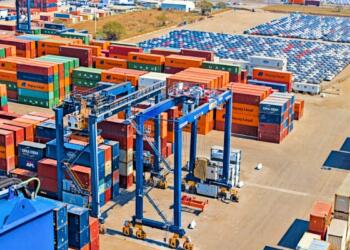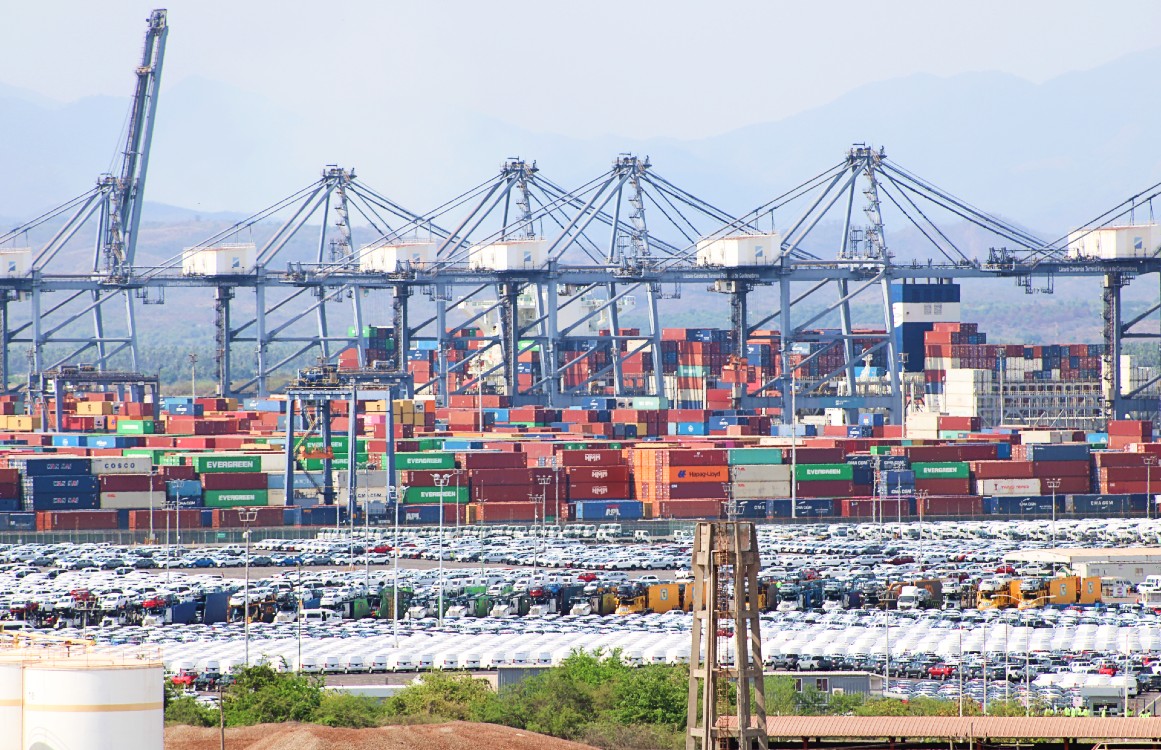
LÁZARO CÁRDENAS, MICH.- The second most important commercial port on the Mexican Pacific coast is experiencing an intense calm before the storm .
The already high operational levels that the port of Lázaro Cárdenas and its various private terminals have recorded so far have only been the prelude to what is expected for the next peak season , mainly in the import of goods from from the far east.
The upward trend is clear. Only in the first four months of this year, the handling of 20-foot containers (TEU) for imports has grown at an annual rate of almost 30% in this port , adding 221,685 TEUs in the period, according to the official figures.
In all of 2023, this maritime hub (connection center) reached 966,349 TEU in import services .
Beatriz Yera herself, general director of APM Terminals , predicts that in the next high season, which traditionally begins in August, the capacity of the Specialized Container Terminal (TEC) II will be up to 95 percent.
Yera made this comment with some concern and warning to María Agustina Álvarez, Marketing Manager of the Administración del Sistema Portuario Nacional (Asipona) Lázaro Cárdenas , in a tour organized by the port authority with a small group of media.
On the side of the TEC II you can see the heavy machinery, including excavators and dump trucks, ready for now to level the ground. These are the first works to be carried out for the expansion of the terminal , the first semi-automated in Latin America, a project that will add 15.7 hectares (ha) to the container yard to reach a total of 65 hectares.
Following the completion of Phase II of the expansion, scheduled for the first quarter of 2026, the terminal will be able to handle an annual throughput capacity of 2.2 million TEU.
Hutchison Ports LCT is not far behind. The TEC I under its administration will also add 28 hectares in its Phase III expansion , with which they hope to increase its handling capacity from the current 1.3 million to two million TEUs.
With the expansion, it is also planned to reach a total of 1,275 meters of dock and 105 hectares in its patios.
Both terminals (TEC I and TEC II) are preparing to meet a substantial expected increase in the exchange of goods by sea which, among other factors, is being driven by the industrial trend of nearshoring or the relocation of production lines.
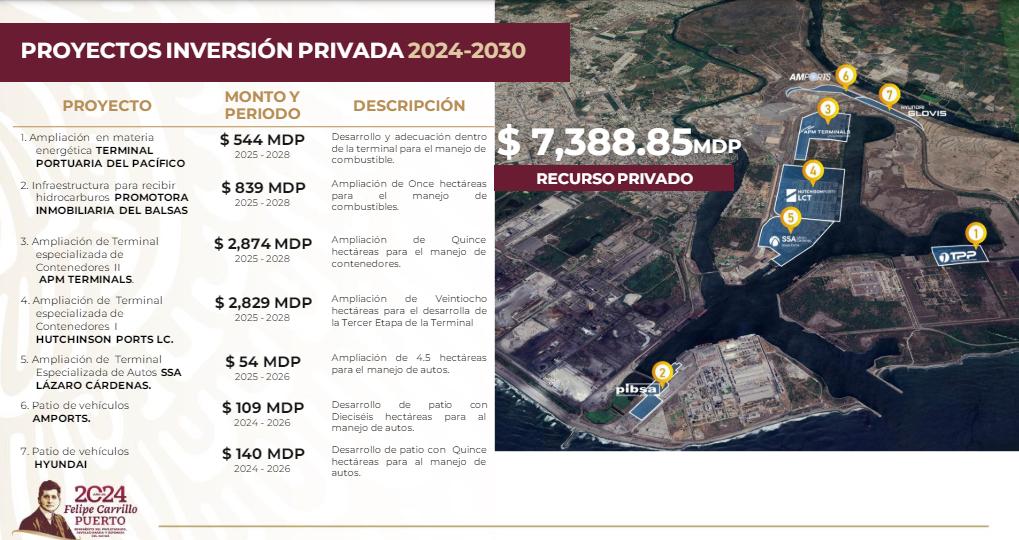
Automotive, the other wave
It is no secret that, on the Pacific coast, the port of Lázaro Cárdenas has become the main recipient of new vehicles imported from China or other Asian countries , an activity that in recent years has forced both the port authority as well as the terminals to “drag the pencil” and develop new projects to avoid the saturations that have been experienced in the recent past.
For some time now, multi-use terminals (TUM) have also carried out a greater number of reception maneuvers for finished vehicles, a business that is going from strength to strength.
Alfredo Huesca, general manager of Hutchison Ports LCT, also administrator of Hutchison Ports LCMT , has told the media group that one of the automotive companies that serves the TUM even intends to double the number of units sent to Mexico , a sign that puts again on alert to managers.
Until May of this year, the port had operated 261,742 units , in import (63%) and export (37%). For all of 2023, the figure of 699,133 units was reached or 8% more than a year before.
Investments in the port of Lázaro Cárdenas focused on the automotive issue are multiplying. This is the case of Hyundai Glovis and Amports , who work on the development of patios, of 15 and 16 hectares, respectively, inside the port area.
In turn, Asipona Lázaro Cárdenas has also been promoting the rental of spaces on the Isla de la Palma, a development of 608 hectares recently acquired from the government of Michoacán for the establishment of companies that provide services to cargo or maritime terminals installed in the port.
SSA México , operator of the Specialized Automobile Terminal (TEA) in this port, has been one of the first companies that has contracted a space in this development – around seven hectares -, which would be used for the movement of automotive units and the discharge of the TEA.
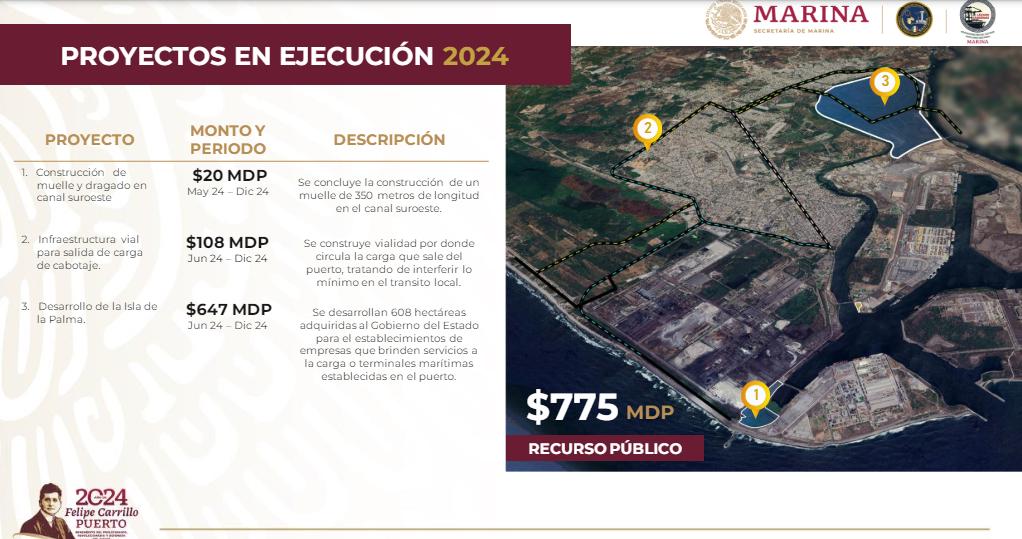
In 2022 alone, nine Chinese automotive companies began port activities in Lázaro Cárdenas. Today more than 50 brands carry out operations from this port.
Meanwhile, Asipona Lázaro Cárdenas is convinced that the investments that are currently being developed will be enough to meet the great demand for port services expected in the near future , although it also has an “ace up its sleeve,” since the port has ample growth potential that could more than double the berthing positions it offers today.
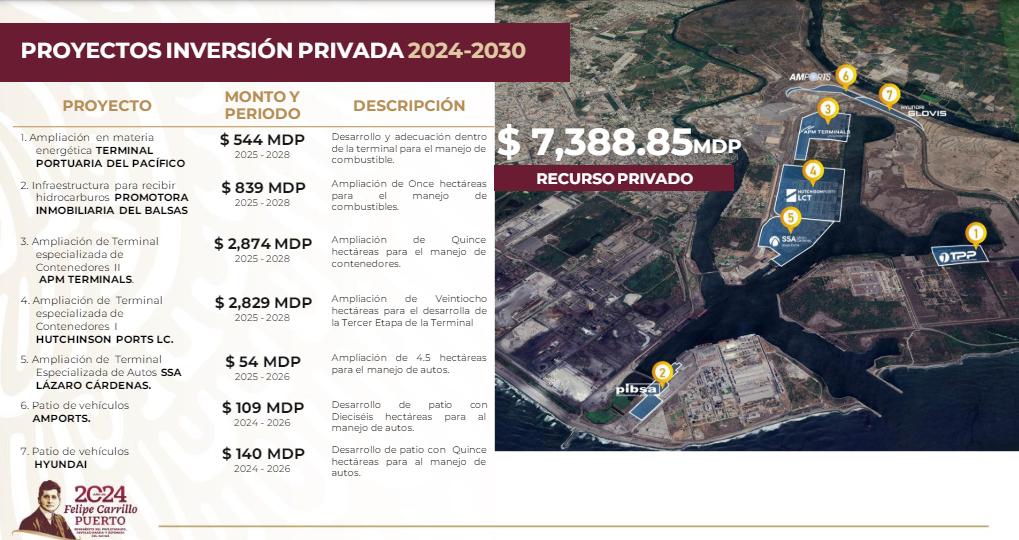
Comment and follow us on X: @EnriqueDuRio / @GrupoT21









